The Bronx River Greenway: Then and Now
A look at how the 23-mile Bronx River Greenway revitalized the Bronx as NYC’s greenest borough
The Bronx River—New York City’s only freshwater river—once was a neglected dumping ground, filled with trash, old tires, cars, and refrigerators stock-piled for miles along an abandoned waterfront. Today, it has become a haven for fish and wildlife, a bikeway and recreation area, and a crown jewel of the borough. Find out how we—working together with the Bronx River Alliance—got there, and where we're going next.
The Bronx River Then
During the early 1800s, the borough’s industrial and settlement boom and reliance on railroads contributed to the pollution of the Bronx River, as companies and households would dump waste directly into the water.
The river became notoriously known for being an “open sewer”—a reputation that continued to the 1970s and 1980s with the deterioration of industrial spaces along the waterway and degraded living conditions throughout the Bronx.
Early Restoration Efforts
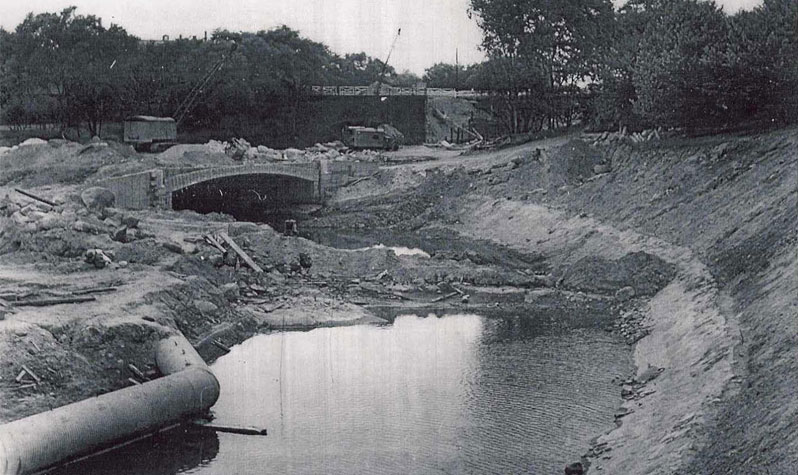
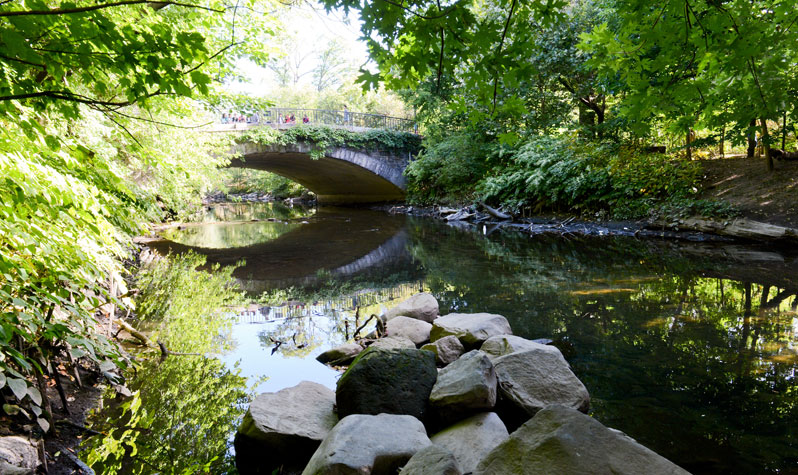
Early efforts to turn around the life of the Bronx River included the completion of the Bronx River Parkway in 1925. But the southern half of the river didn’t receive dedicated restoration until the '70s when Ruth Anderberg founded the Bronx River Restoration Project with a handful of other concerned citizens in 1974.
In the '80s, the group created the Bronx River Restoration Master Plan, which advocated for a revival of the whole river with a continuous waterfront park—a concept that became known as the Bronx River Greenway.
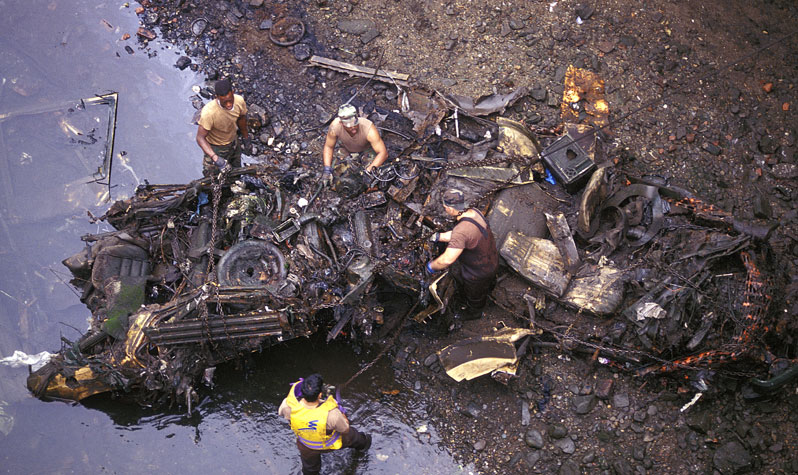
In the 1990s and early 2000s, 60 community organizations, public agencies, and businesses, including the National Guard of New York State and Youth Ministries for Peace and Justice (pictured above), teamed up to help restore the Bronx River and improve access to it, as part of the Bronx River Working Group (a predecessor group to the Bronx River Alliance, which was founded in 2000).
Restoring the River: The Bronx River Now
Thanks to efforts of the Bronx River Alliance, community organizations, neighbors, and committed leaders, we began to see successful restoration efforts taking place all along the river. Touring the Bronx today, you'll see the results of more than 20 years of hard work.
Soundview Park
To help improve the river’s water quality, we looked to the mouth of the Bronx River at Soundview Park, a former landfill.

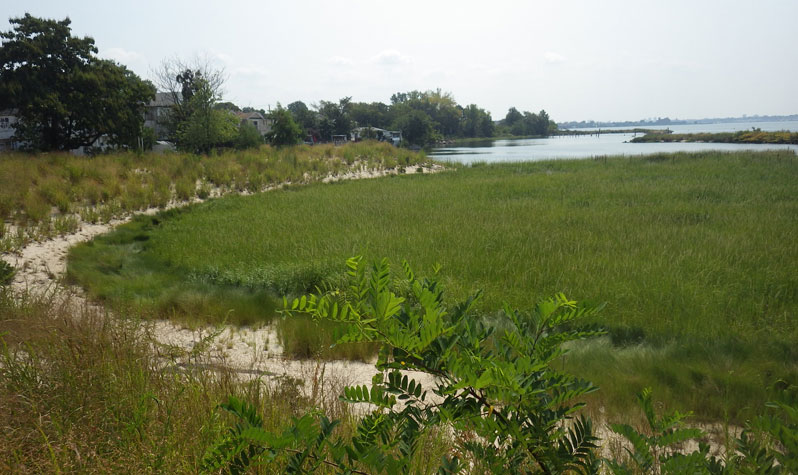
We restored the salt marsh where the Bronx River meets the East River. Salt marshes help improve water quality by filtering out pollutants and trapping debris, and the grass roots help prevent erosion by holding the soil together. The salt marsh’s nutrient-rich habitat is also a great food source, attracting fiddler crabs, mussels, and fish, as well as birds, such as blue herons, snowy egrets, and canvasback ducks, that feed on fish.
Throughout the year, our stewardship team, the Natural Areas Group, volunteers, and the Bronx River Alliance and its partners host cleanup sessions to remove trash trapped in the marsh. Learn more about this salt marsh at Soundview Park
Hunts Point Riverside Park
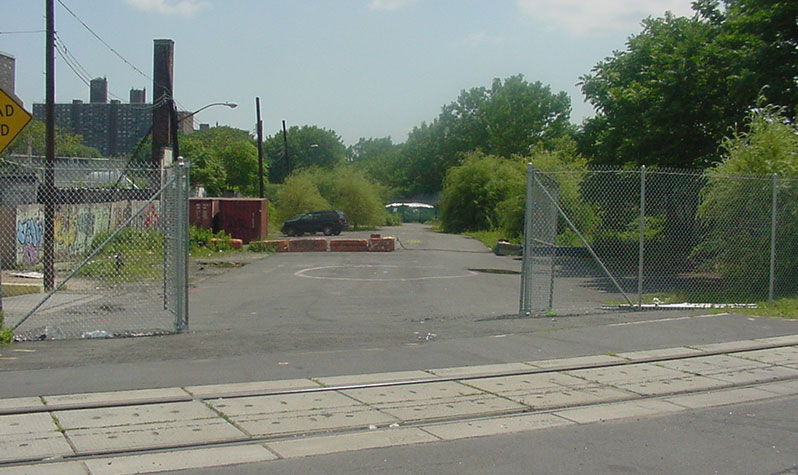
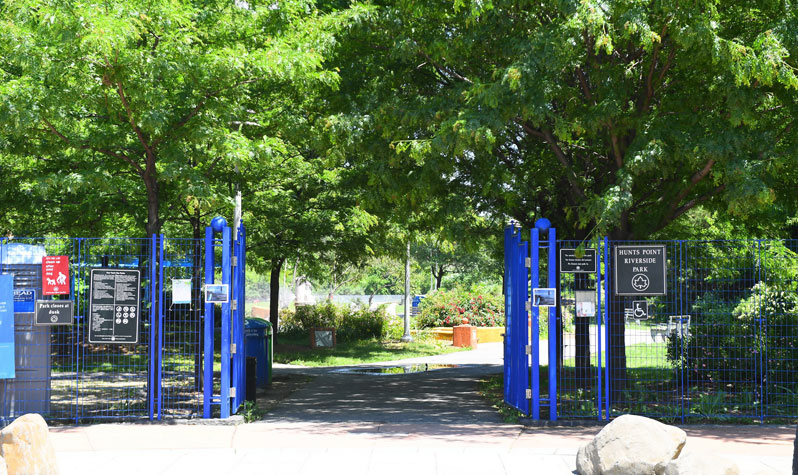
Hunts Point Riverside Park was a street end that had become an illegal dumping ground before local officials and community members helped clean it up and established it as a park in 2007.
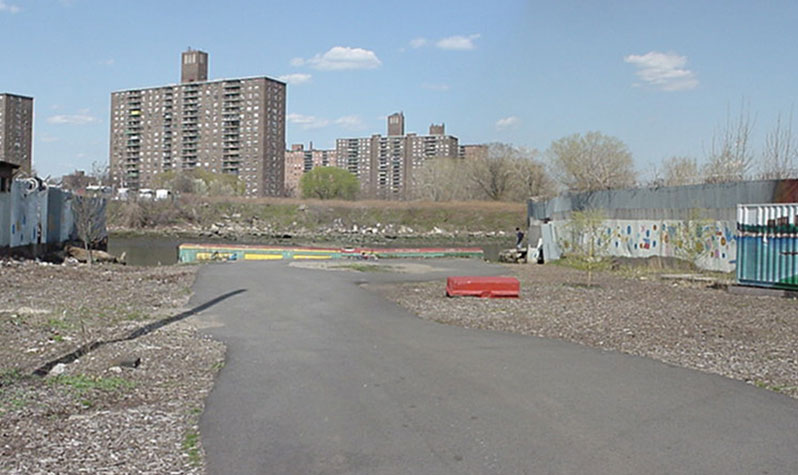
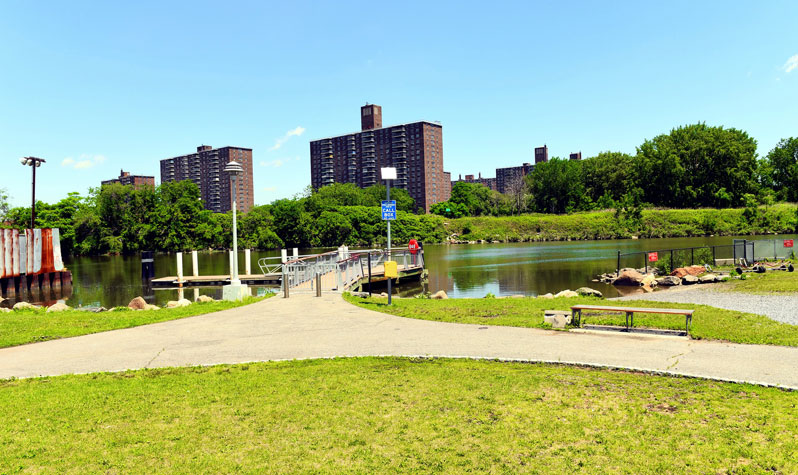
Today, visitors to this beautiful waterfront space can enjoy rowing and fishing at the floating dock; open lawn space for picnicking and barbecuing; a river-themed playground; and natural, terraced waterfront seating. Learn more about Hunts Point Riverside Park
Concrete Plant Park
A little ways upstream from Hunts Point Riverside Park stood a concrete plant which operated from the 1940s through 1987. After closing, the land was left abandoned for years before we acquired it in 2000 with the help of local advocates.
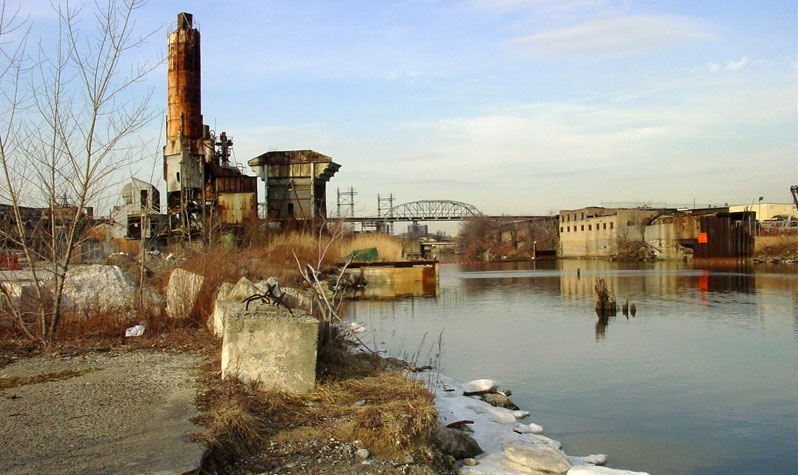
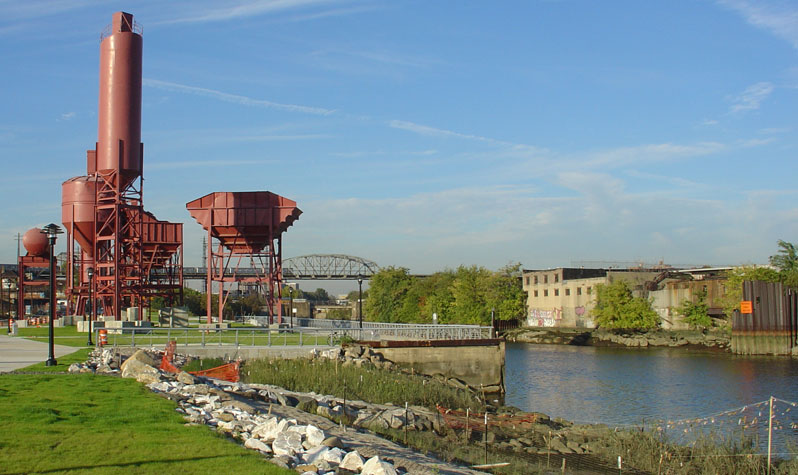
After photo by Joan Byron
We joined forces with the Bronx River Alliance, community groups, and City agencies to clean up the river, restore salt marsh along the banks, and fix up the site with a waterfront promenade, seating areas, and a canoeing/kayaking launch point. New York City's Department of Environmental Protection added a trash boom across the river to capture debris for pick up.
Following a major improvements, Concrete Plant Park opened in 2009, and features nods to its past with repainted, preserved structures from the old concrete plant, as well as remnants of an old boating pier. This forward-thinking park references the Bronx's industrial past and sustainable future. Learn more about Concrete Plant Park
Starlight Park
Starlight Park was once an amusement park, with a stadium, roller coaster, and swimming pool existing just north of the current park until the 1930s.
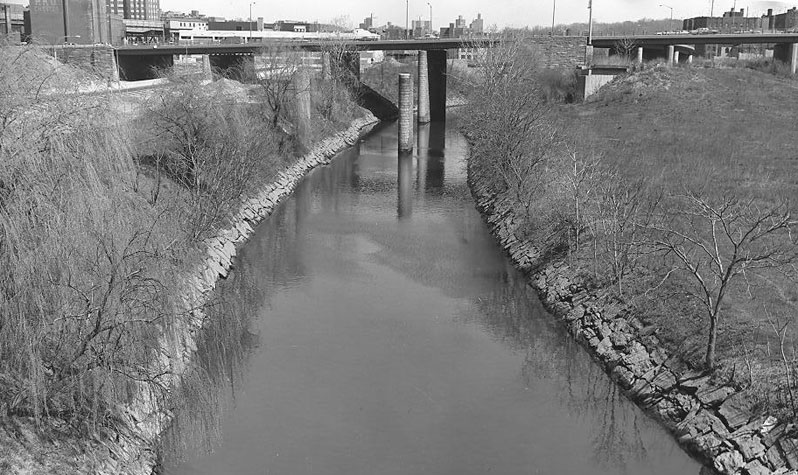

While Starlight Park existed for decades as paved athletic fields by the river, in 2013, following a major capital improvement, the park officially reopened as a City park, with baseball fields, playgrounds, and canoeing/kayaking—an activity that’s much celebrated with the annual Bronx River Flotilla.
Starlight Park is slated to become the home of the borough’s greenest building—the River House, which will include a waterfront educational facility, a boat house, and a community meeting space. The building’s green features include energy-efficient and water conservation elements, such as rain water harvesting, ground-source heat, and solar panels. Learn more about Starlight Park
Today's Efforts
West Farms Rapids
Ongoing efforts to realize the Bronx community’s dream of a continuous series of parks and trails along the river—the Bronx River Greenway—continues at West Farms Rapids.
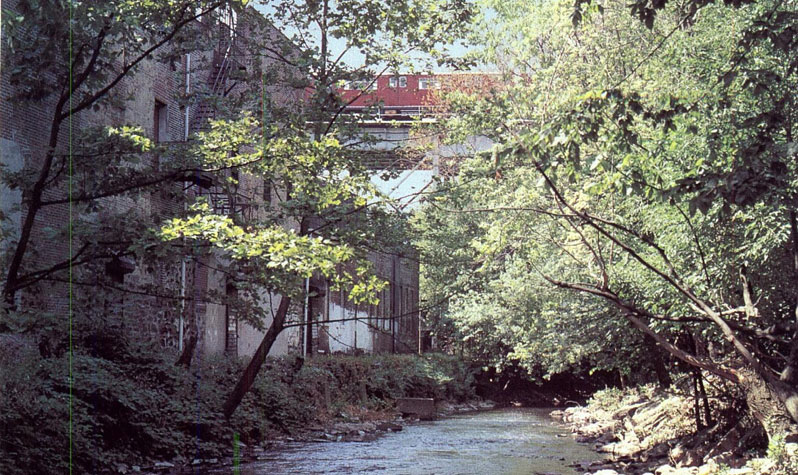
Like its neighboring parks, West Farms Rapids—currently closed for restoration—was also plagued by the riverfront’s decline until it first became a park in 1980. Although the park benefited from much needed upgrades in the 1990s, we’re rebuilding the park with more park amenities and greenery, and closing the greenway’s gap at West Farms.
Restoring the North Bronx
Together with the Bronx River Alliance, we are revitalizing riverfront parks and stitching them together into the complete system of the Bronx River Greenway.


In 2012, we added a new entrance here at 211th Street in Shoelace Park. The entrance features sitting areas, plants and shrubs, bioswales (tiny green islands that trap run-off water), and improved signage to safely guide visitors to the park’s strip of the greenway—one of the best spots along the Bronx River for jogging, biking, and in-line skating.
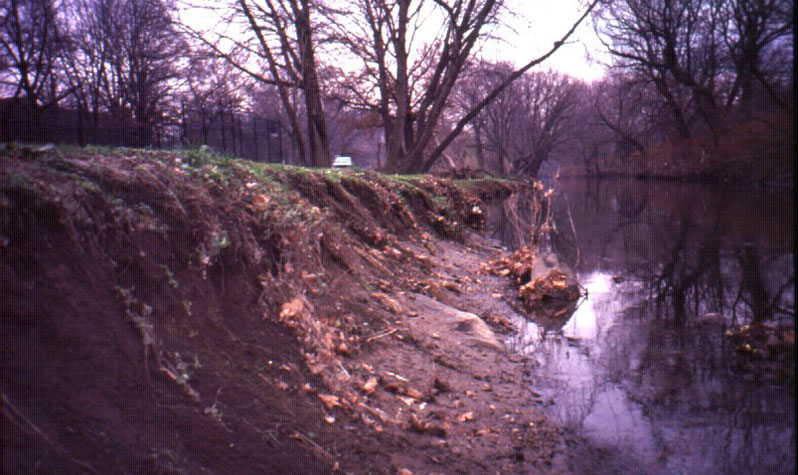
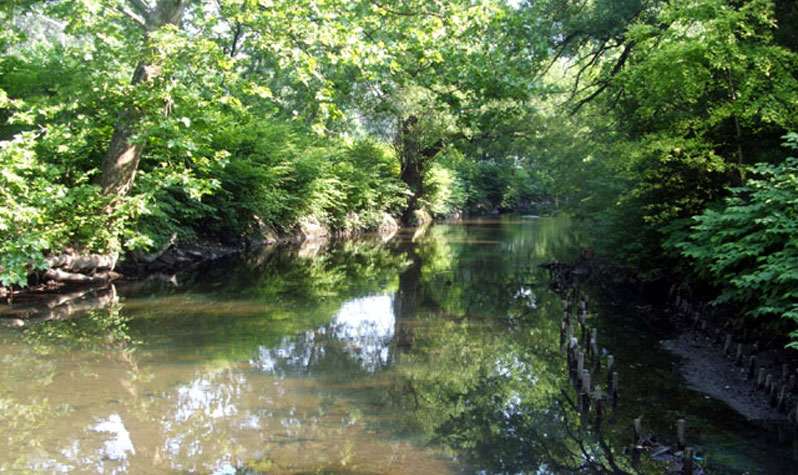
And we’ve done restoration work to vegetation along the riverbanks.
From Shoelace Park, the greenway extends up to Muskrat Cove before continuing north into Westchester County.
In 2008, we cleaned up and restored the area that is now Muskrat Cove, bringing the Wakefield and Woodlawn neighborhoods more places to run, bike, and relax.
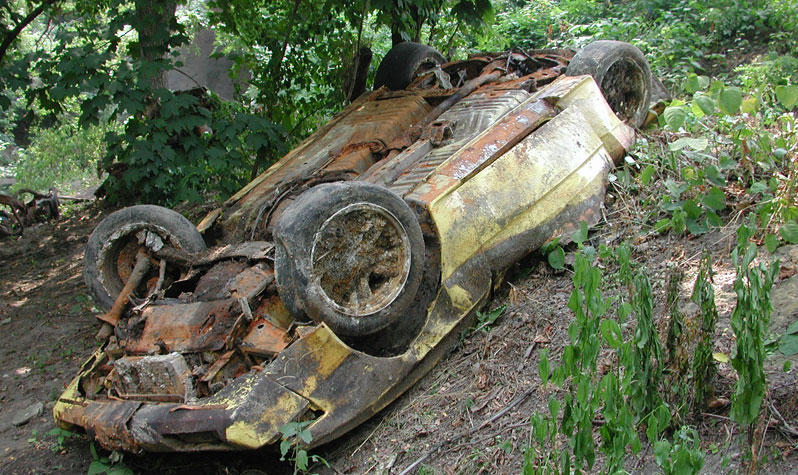
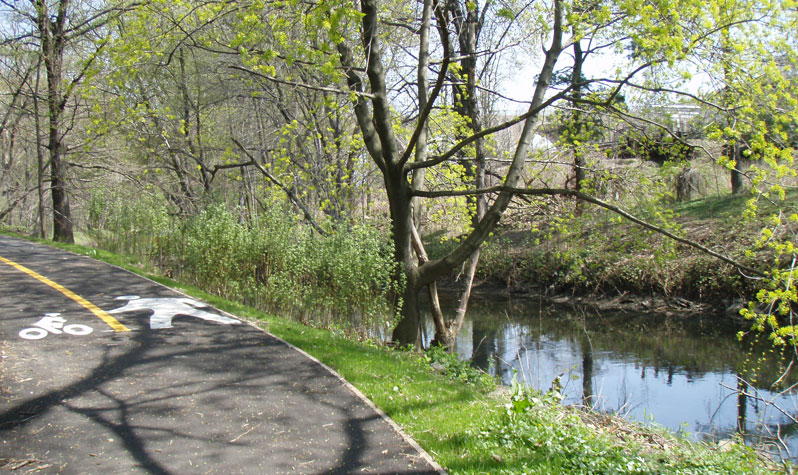
Restoring Our Habitat
Although the Bronx River’s water quality and waterfront space have improved tremendously, we, along with the Bronx River Alliance, the Natural Resources Group, and the local community, are continuing our efforts to restore the Bronx River as a habitat for our wildlife.

For decades, the 182nd Street Dam at River Park (just south the Bronx Zoo) has been a wonderful attraction for local Bronx residents, but it was also a barrier to wildlife that depended on a free-flowing river.
In 2015, a fish ladder opened at the dam to provide migratory fish with easier access over the fall to more food sources and new habitats upstream. Their return will help increase the biodiversity of the Bronx River by attracting more predatory fish and birds.
At Bronx Park, the Bronx River Forest is home to the only remaining floodplain forest in the lower Bronx river watershed, with unique tree species and habitats that attract a variety of wildlife.


In 2004, we restored this important riverine forest by removing introduced species, planting native species, reinforcing the river banks, adding in-stream habitat structures, and reconnecting the river to its historic floodplain.
Today, our stewardship team, the Bronx River Alliance, and its partners work together to help restore the Bronx River’s forested areas by performing trail work, removing problematic introduced species, and planting more trees along the greenway. Learn more about the Bronx River Forest
Join us
Want to help us continue our quest to fully restore the Bronx River Greenway? You can become an NYC Parks Steward and find restoration projects along the Bronx River and across the city. You can also join the Bronx River Alliance, who, in addition to leading restoration and stewardship efforts, also work hard to provide a voice for the river and empower local communities.